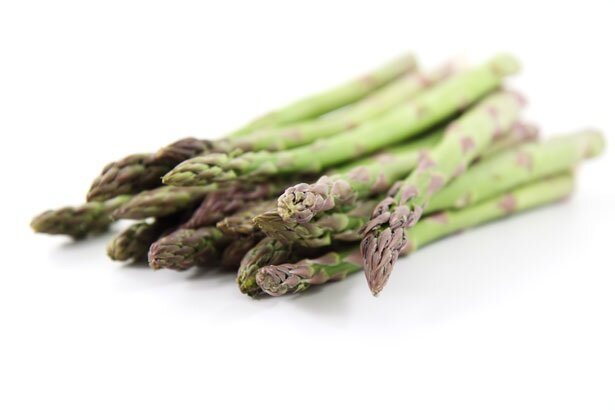Asparagus
About: There are about three varieties of asparagus: green, white and purple. While green ranks the most popular in the states, white asparagus (which is acually just green asparagus that hasn't been exposed to sunlight) is more popular in Europe. Purple asparagus, the prettiest of the three, has a sweeter taste and more tender texture. Steam, roast, boil, grill or microwave--the possibilities are endless.
Nutritional Information: Asparagus is low in Saturated Fat, Calories, Cholesterol, and Sodium and a very good source of Dietary Fiber and Protein. It has a high, diverse, and well-balanced vitamin and mineral content. A large portion of the calories in asparagus come from sugars. For more nutrition information...
Storage: Asparagus should be eaten immediately, or kept in the refrigerator no more than 2-3 days. To store them, snap off the ends and stand stalks upright in a container with 1” of water, or wrap a moist paper towel around stems and keep them in a plastic bag. Do not wash them before storing.
Tips: There are 6-8 asparagus spears in a cup, which is considered one serving. Asparagus can be kept frozen for up to 8 months. Trim and leave whole or cut into 2-3” lengths, blanch until bright green and still crisp. Submerge in ice water immediately, dry and seal in airtight plastic bags. Asparagus can be canned and is also well suited to pickling.
Wonder what it means to "snap the woody ends" of asparagus? While the tip and upper portion of asparagus are tender, the stalks become increasingly fibrous toward the bottom. To snap the “woody ends”, bend the stalk near the bottom and snap it in two. If it is difficult to snap, move up the stalk until you find the natural break between the tender and tough portions. Save the woody ends for stock.
Quick Fix: Cook lightly covered in microwave for a minute or two then dip in ice water. Serve cold with olive oil, lemon vinegrette and parmesan cheese.
Recipes: How to cook asparagus, Sesame Asparagus, Lemon Lovers' Asparagus